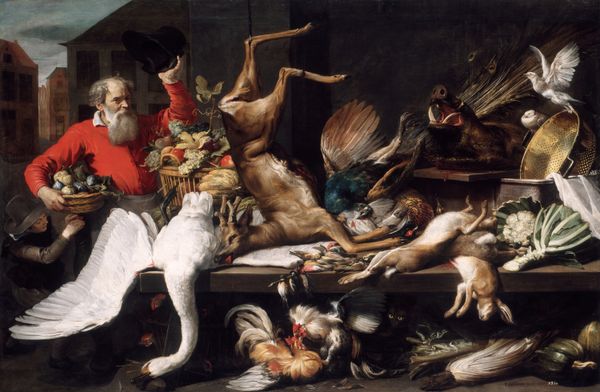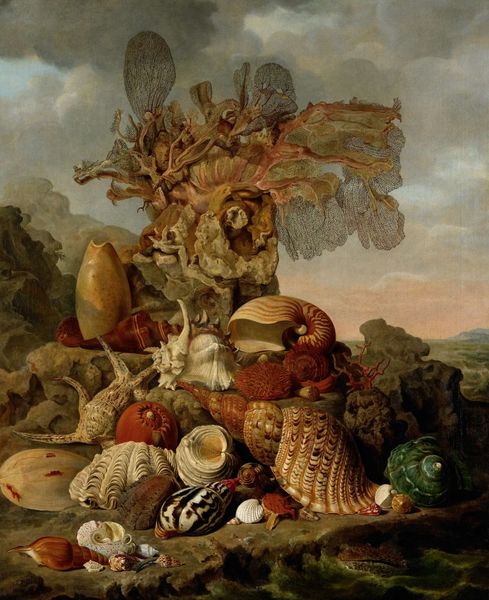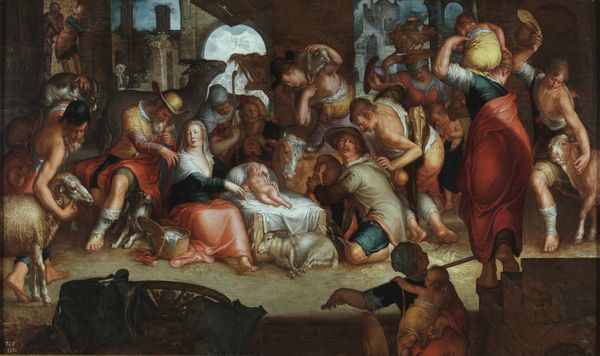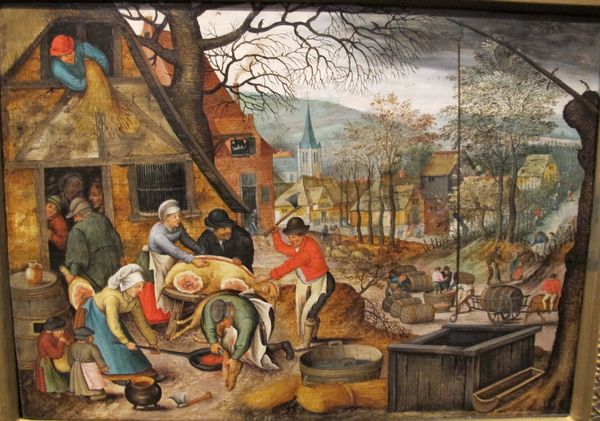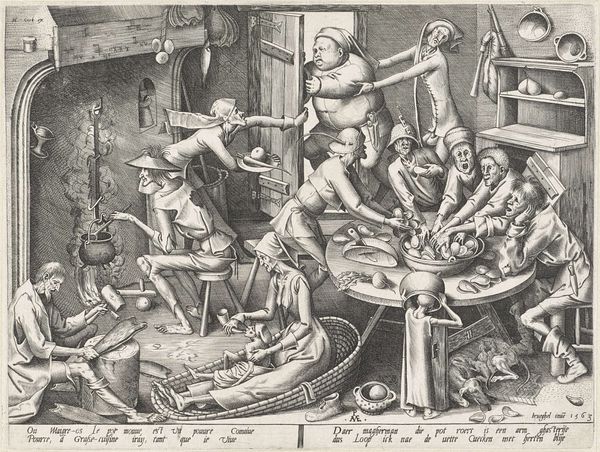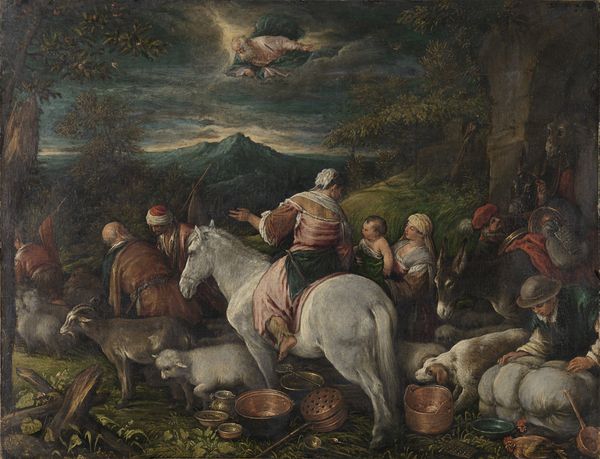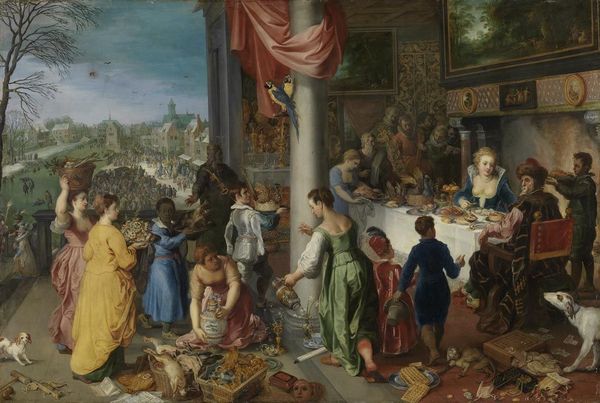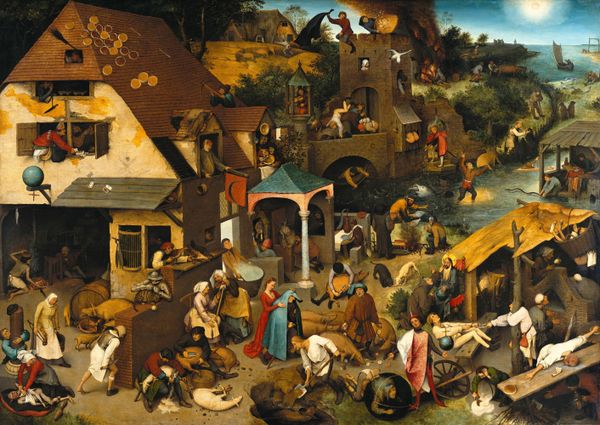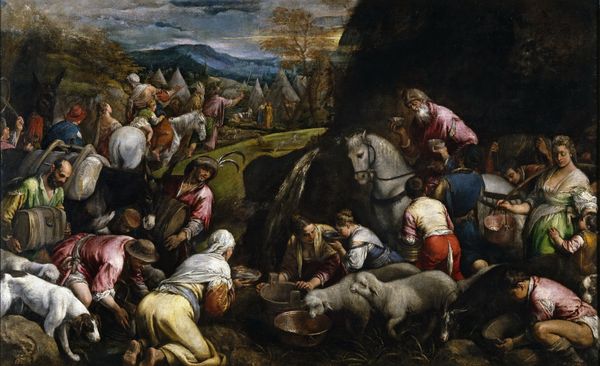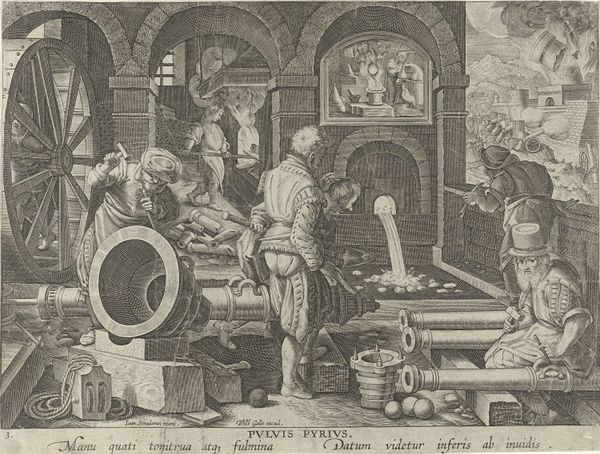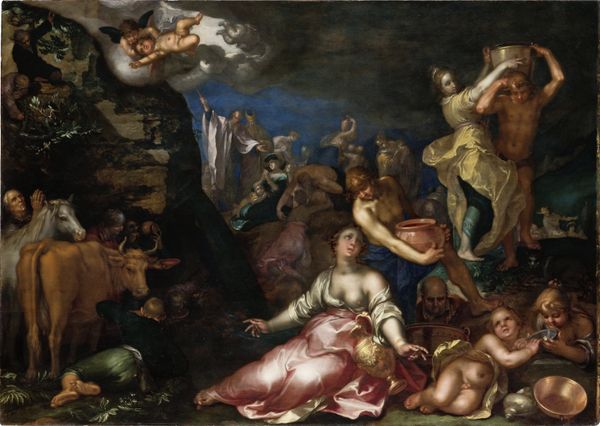
painting, oil-paint
#
allegory
#
painting
#
oil-paint
#
mannerism
#
figuration
#
oil painting
#
history-painting
#
italian-renaissance
Copyright: Public domain
Jacopo Bassano's "The Forge of Vulcan" offers a fascinating glimpse into 16th-century Venetian society, blending classical mythology with everyday life. The painting places the god Vulcan's forge not in some distant Mount Etna, but within a bustling, contemporary workshop. This domestication speaks to the rising merchant class in Venice, who saw value in labor and craftsmanship. Bassano’s detailed portrayal of tools and metalwork reflects the economic importance of these trades. But the painting also presents questions about the role of the artist. Is Bassano elevating the status of artisans by associating them with a god? Or is he, perhaps, subtly critiquing the classical ideals of art by grounding them in the mundane? To fully understand Bassano's intentions, one must delve into the social and economic fabric of Venice during the Renaissance, using account books, guild records, and other archival sources. Only then can we appreciate the nuances of this work.
Comments
No comments
Be the first to comment and join the conversation on the ultimate creative platform.
